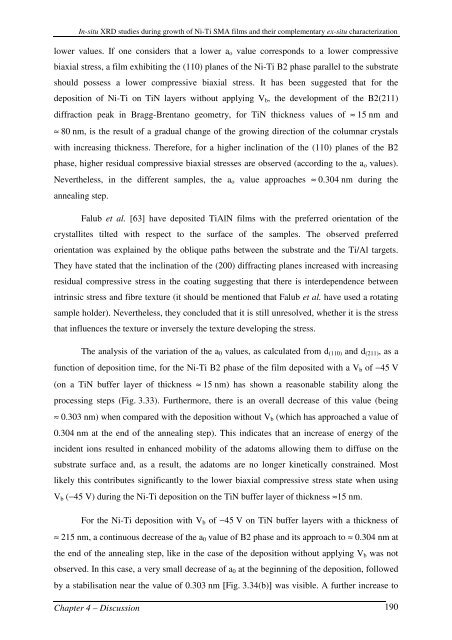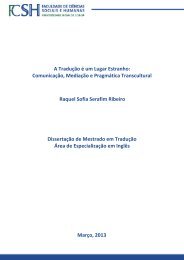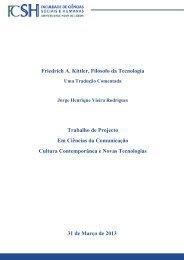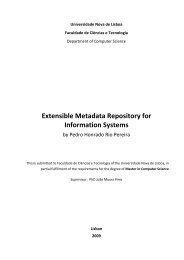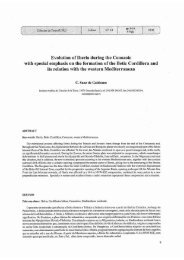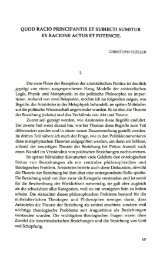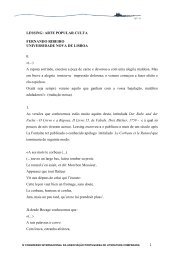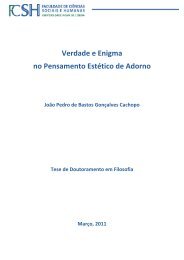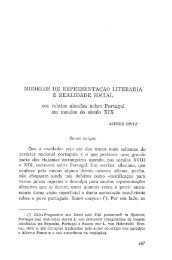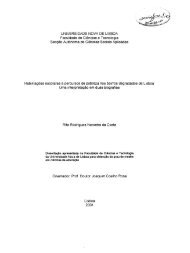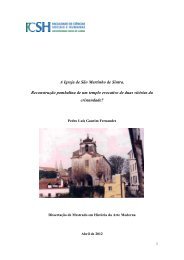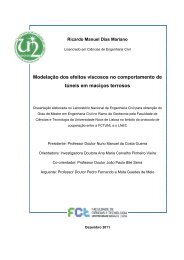PhD Thesis_RuiMSMartins.pdf - RUN UNL
PhD Thesis_RuiMSMartins.pdf - RUN UNL
PhD Thesis_RuiMSMartins.pdf - RUN UNL
You also want an ePaper? Increase the reach of your titles
YUMPU automatically turns print PDFs into web optimized ePapers that Google loves.
In-situ XRD studies during growth of Ni-Ti SMA films and their complementary ex-situ characterization<br />
lower values. If one considers that a lower a o value corresponds to a lower compressive<br />
biaxial stress, a film exhibiting the (110) planes of the Ni-Ti B2 phase parallel to the substrate<br />
should possess a lower compressive biaxial stress. It has been suggested that for the<br />
deposition of Ni-Ti on TiN layers without applying V b , the development of the B2(211)<br />
diffraction peak in Bragg-Brentano geometry, for TiN thickness values of ≈ 15 nm and<br />
≈ 80 nm, is the result of a gradual change of the growing direction of the columnar crystals<br />
with increasing thickness. Therefore, for a higher inclination of the (110) planes of the B2<br />
phase, higher residual compressive biaxial stresses are observed (according to the a o values).<br />
Nevertheless, in the different samples, the a o value approaches ≈ 0.304 nm during the<br />
annealing step.<br />
Falub et al. [63] have deposited TiAlN films with the preferred orientation of the<br />
crystallites tilted with respect to the surface of the samples. The observed preferred<br />
orientation was explained by the oblique paths between the substrate and the Ti/Al targets.<br />
They have stated that the inclination of the (200) diffracting planes increased with increasing<br />
residual compressive stress in the coating suggesting that there is interdependence between<br />
intrinsic stress and fibre texture (it should be mentioned that Falub et al. have used a rotating<br />
sample holder). Nevertheless, they concluded that it is still unresolved, whether it is the stress<br />
that influences the texture or inversely the texture developing the stress.<br />
The analysis of the variation of the a 0 values, as calculated from d (110) and d (211) , as a<br />
function of deposition time, for the Ni-Ti B2 phase of the film deposited with a V b of −45 V<br />
(on a TiN buffer layer of thickness ≈ 15 nm) has shown a reasonable stability along the<br />
processing steps (Fig. 3.33). Furthermore, there is an overall decrease of this value (being<br />
≈ 0.303 nm) when compared with the deposition without V b (which has approached a value of<br />
0.304 nm at the end of the annealing step). This indicates that an increase of energy of the<br />
incident ions resulted in enhanced mobility of the adatoms allowing them to diffuse on the<br />
substrate surface and, as a result, the adatoms are no longer kinetically constrained. Most<br />
likely this contributes significantly to the lower biaxial compressive stress state when using<br />
V b (−45 V) during the Ni-Ti deposition on the TiN buffer layer of thickness ≈15 nm.<br />
For the Ni-Ti deposition with V b of −45 V on TiN buffer layers with a thickness of<br />
≈ 215 nm, a continuous decrease of the a 0 value of B2 phase and its approach to ≈ 0.304 nm at<br />
the end of the annealing step, like in the case of the deposition without applying V b was not<br />
observed. In this case, a very small decrease of a 0 at the beginning of the deposition, followed<br />
by a stabilisation near the value of 0.303 nm [Fig. 3.34(b)] was visible. A further increase to<br />
Chapter 4 – Discussion 190


